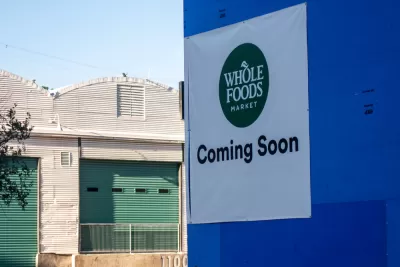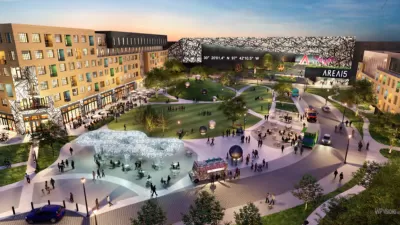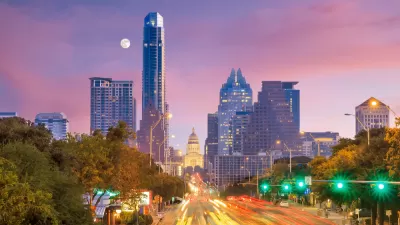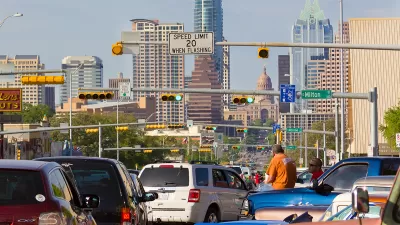The Texas state capital’s “right to return” law was delayed by the pandemic, but Austin is now taking applications for longtime low-income residents to find housing in gentrifying neighborhoods.

“The City of Austin says it will give people from gentrifying neighborhoods priority in the application process for more than two dozen homes it's selling to low-income families,” reports Audrey McGlinchy for KUT.
“This is the first time the city plans to use what it calls a ‘preference policy,’ which was approved by council members in 2018,” according to McGlincy. Planetizen shared news of the new policy in September 2021, when the city identified a development site for the program. The deployment of the law, originally intended for late 2019, was delayed by the pandemic.
“To benefit from the program, people first need to be making less than Austin's family median income; for a single-person household that amounts to $69,250 a year,” according to McGlinchy. “Additionally, people need to prove they've been affected by gentrification or that they have generational ties to the city. That can mean they live or have lived — as far back as 2000 — in a neighborhood in the process of gentrifying; that's the process in which wealthy people move to a historically middle- or low-income neighborhood and housing costs rise.”
A study published in 2018 by researchers from the University of Texas is informing the city’s assessment of gentrification around the city.
More details on the new right to return law and the properties available in this first wave of applications can be found in the source article below.
FULL STORY: Austin says it will sell city-owned property to families affected by gentrification

Trump Administration Could Effectively End Housing Voucher Program
Federal officials are eyeing major cuts to the Section 8 program that helps millions of low-income households pay rent.

Planetizen Federal Action Tracker
A weekly monitor of how Trump’s orders and actions are impacting planners and planning in America.

The 120 Year Old Tiny Home Villages That Sheltered San Francisco’s Earthquake Refugees
More than a century ago, San Francisco mobilized to house thousands of residents displaced by the 1906 earthquake. Could their strategy offer a model for the present?

HSR Reaches Key Settlement in Northern California City
The state’s high-speed rail authority reached an agreement with Millbrae, a key city on the train’s proposed route to San Francisco.

Washington State Legislature Passes Parking Reform Bill
A bill that would limit parking requirements for new developments is headed to the governor’s desk.

Missouri Law Would Ban Protections for Housing Voucher Users
A state law seeks to overturn source-of-income discrimination bans passed by several Missouri cities.
Urban Design for Planners 1: Software Tools
This six-course series explores essential urban design concepts using open source software and equips planners with the tools they need to participate fully in the urban design process.
Planning for Universal Design
Learn the tools for implementing Universal Design in planning regulations.
Ada County Highway District
Clanton & Associates, Inc.
Jessamine County Fiscal Court
Institute for Housing and Urban Development Studies (IHS)
City of Grandview
Harvard GSD Executive Education
Toledo-Lucas County Plan Commissions
Salt Lake City
NYU Wagner Graduate School of Public Service





























